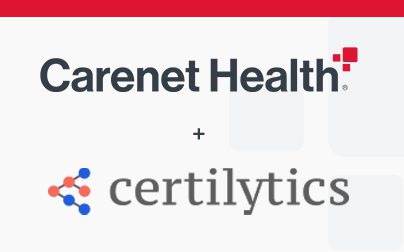
As the scientists working to develop a vaccine for COVID-19 began to report promising clinical trials, Carenet Health leaders knew healthcare consumer engagement would need to play a role in the distribution of a vaccine. Why? Because we know from experience that moving large volumes of consumers to action when it comes to very personal care recommendations takes strategic action, individual conversations and multichannel outreach.
Our engagement teams already help clients—including health plans and risk-based provider organizations—coordinate and communicate the need for other types of vaccinations for diseases like influenza, shingles and pneumonia. We sat down with Vikie Spulak, Carenet Health Chief Client Officer, to discuss Carenet’s role now that COVID-19 vaccines are available, and how critical consumer engagement fits into an accessible and successful mass vaccination strategy.
Q: Let’s start with the “what.” In what ways are Carenet teams assisting with the first phases of COVID-19 vaccine distribution?
A: Our first call for help came as some of America’s largest retail pharmacies were charged with getting the COVID-19 vaccine to our nation’s skilled nursing facilities. We’re helping to schedule onsite vaccination clinics for that very vulnerable population and the staff who work at those facilities—tackling everything from parking logistics to patient registration to reminder and follow-up calls.
In addition to those outreach communications, we’re also helping clients with scheduling the all-important in-person appointments for the first phases of the general public vaccinations—seniors over 65.
Q: Are there additional engagement-related initiatives in the planning stages?
A: We’re also having discussions about other types of appointment scheduling, education and outreach. We’re fortunate that we can stand up solutions and scale them quickly, whether it’s one-on-one conversational engagement that can help motivate hesitant individuals to move forward with getting the vaccine, quick messages reminding patients of the importance of the second dose, or providing information via push channels, like interactive voice response (IVR) messaging.
We can also engage our clinical team via telehealth for support for pre- and post-vaccination needs. There are a lot of ways we can help, and different strategies and channels we can use.
Q: It sounds like the pairing of phone outreach and digital communication tactics is a priority.
A: In a perfect world, the healthcare industry is going to be using the best of what’s available—text-to-schedule, online portals, automated reminders and personalized, human connection that we know works when it comes to emotional decisions. We anticipate working closely with more partners as next-phase distribution plans are formalized and organizations have a clearer understanding of their role.
As we’re seeing with our work in getting seniors vaccinated, having online appointment scheduling is great, but it doesn’t necessarily deliver equal access. Those without internet service or smartphones, or those who might need technical support or who have questions about the vaccination process, need access to appointments and information, too. If the nation wants to reach the success rates we’re all hoping for, we have to think about outreach and communication in terms of specific population needs.
Q: Are there other factors organizations should be aware of as they plan for engagement with their populations?
A: I think planning has to include some of the lessons we’ve learned in our decades of work with healthcare consumers in closing their gaps in care … in making those hard-to-think-about and easy-to-put-off appointments. Using the principles of persuasion and motivation to move these important conversations from “I’ll think about it” to “Let’s do it” will be important as we move down the lists of those eligible for COVID-19 vaccines.
We should all be continually optimizing from what we learn after each day to help individuals overcome their fears—and break down their barriers. What changes in scripts are needed for this population? Would a different channel perform better? Removing barriers might be as simple as arranging for transportation to a vaccine clinic site. Or there could be cultural beliefs or health literacy issues to address.
At Carenet, we’ve established ways to handle these situations from our past experience, and we’re learning quickly what will work and what won’t for this particular vaccine distribution. Tailoring outreach to the population will continue to be critical.
Q: What does it mean to Carenet Health team members to be working on vaccine scheduling and distribution programs?
A: The pandemic has affected us all emotionally, and ultimately, this work is different because of the scale of the efforts and the scale of the pandemic. We understand the importance … the difference for our clients, the difference vaccination can make in people’s lives and in getting our society back to some kind of normal. Our teams are really honored to be asked to help, and we’re honored to partner with our clients to make these programs happen. We have teams working days and nights, teams working a great deal of overtime to make these initiatives successful. We’re all thankful for their commitment.
I think all of these efforts become even more meaningful when we hear sincere words of thanks from those patients we’ve had the privilege of helping. They are just so relieved. Of course, we feel this in our typical outreach work, but it’s all magnified right now.
—
For more information on healthcare consumer engagement best practices or Carenet’s work with COVID-19-related education and outreach, please contact us today.



